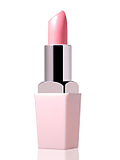Lipstick
Lipstick
Lipstick is a cosmetic product containing pigments, oils, waxes, and emollients that apply color, texture, and protection to the lips. Many varieties of lipstick exist, including matte, satin, and gloss finishes. Lipstick is often used to enhance the appearance of the lips, adding color and sometimes texture.
History
The use of lipstick dates back to ancient civilizations. The earliest known use of lipstick was by the Sumerians, who crushed gemstones and used them to decorate their lips and faces. In ancient Egypt, both men and women used lipstick made from a combination of red ochre and iron oxide.
During the Elizabethan era, bright red lips and a stark white face became fashionable. Queen Elizabeth I was known for her red lips, which were achieved using a mixture of beeswax and red plant-based dyes.
In the 20th century, lipstick became a symbol of femininity and fashion. The invention of the swivel-up tube in 1923 made lipstick more accessible and portable.
Composition
Lipstick is composed of a variety of ingredients, each serving a specific purpose:
- Waxes: Provide structure and shape. Common waxes include beeswax, candelilla wax, and carnauba wax.
- Oils: Add moisture and shine. Popular oils include castor oil, olive oil, and mineral oil.
- Pigments: Provide color. These can be natural or synthetic.
- Emollients: Soften and hydrate the lips.
Types of Lipstick
Lipsticks come in various types, each offering different finishes and effects:
- Matte: Offers a flat, non-shiny finish. Known for its long-lasting properties.
- Satin: Provides a slight sheen and is more moisturizing than matte.
- Gloss: Gives a shiny, wet look and is often less pigmented.
- Sheer: Offers a light wash of color, often with a glossy finish.
- Cream: Balances between matte and gloss, providing rich color with a creamy texture.
Cultural Significance
Lipstick has played a significant role in cultural and social contexts. During World War II, lipstick was seen as a morale booster for women. In the 1950s, actresses like Elizabeth Taylor and Marilyn Monroe popularized bold red lips.
In contemporary times, lipstick is used by people of all genders and is a staple in many makeup routines. It is also used in various subcultures, such as goth and punk, where black lipstick is popular.
Application Techniques
Applying lipstick can be an art form. Common techniques include:
- Lining: Using a lip liner to define the edges of the lips.
- Filling: Applying lipstick within the lined area.
- Blotting: Pressing lips together on a tissue to remove excess product.
Related Pages
Gallery
Transform your life with W8MD's budget GLP-1 injections from $125.
W8MD offers a medical weight loss program to lose weight in Philadelphia. Our physician-supervised medical weight loss provides:
- Most insurances accepted or discounted self-pay rates. We will obtain insurance prior authorizations if needed.
- Generic GLP1 weight loss injections from $125 for the starting dose.
- Also offer prescription weight loss medications including Phentermine, Qsymia, Diethylpropion, Contrave etc.
NYC weight loss doctor appointments
Start your NYC weight loss journey today at our NYC medical weight loss and Philadelphia medical weight loss clinics.
- Call 718-946-5500 to lose weight in NYC or for medical weight loss in Philadelphia 215-676-2334.
- Tags:NYC medical weight loss, Philadelphia lose weight Zepbound NYC, Budget GLP1 weight loss injections, Wegovy Philadelphia, Wegovy NYC, Philadelphia medical weight loss, Brookly weight loss and Wegovy NYC
|
WikiMD's Wellness Encyclopedia |
| Let Food Be Thy Medicine Medicine Thy Food - Hippocrates |
Medical Disclaimer: WikiMD is not a substitute for professional medical advice. The information on WikiMD is provided as an information resource only, may be incorrect, outdated or misleading, and is not to be used or relied on for any diagnostic or treatment purposes. Please consult your health care provider before making any healthcare decisions or for guidance about a specific medical condition. WikiMD expressly disclaims responsibility, and shall have no liability, for any damages, loss, injury, or liability whatsoever suffered as a result of your reliance on the information contained in this site. By visiting this site you agree to the foregoing terms and conditions, which may from time to time be changed or supplemented by WikiMD. If you do not agree to the foregoing terms and conditions, you should not enter or use this site. See full disclaimer.
Credits:Most images are courtesy of Wikimedia commons, and templates, categories Wikipedia, licensed under CC BY SA or similar.
Translate this page: - East Asian
中文,
日本,
한국어,
South Asian
हिन्दी,
தமிழ்,
తెలుగు,
Urdu,
ಕನ್ನಡ,
Southeast Asian
Indonesian,
Vietnamese,
Thai,
မြန်မာဘာသာ,
বাংলা
European
español,
Deutsch,
français,
Greek,
português do Brasil,
polski,
română,
русский,
Nederlands,
norsk,
svenska,
suomi,
Italian
Middle Eastern & African
عربى,
Turkish,
Persian,
Hebrew,
Afrikaans,
isiZulu,
Kiswahili,
Other
Bulgarian,
Hungarian,
Czech,
Swedish,
മലയാളം,
मराठी,
ਪੰਜਾਬੀ,
ગુજરાતી,
Portuguese,
Ukrainian
Contributors: Prab R. Tumpati, MD









